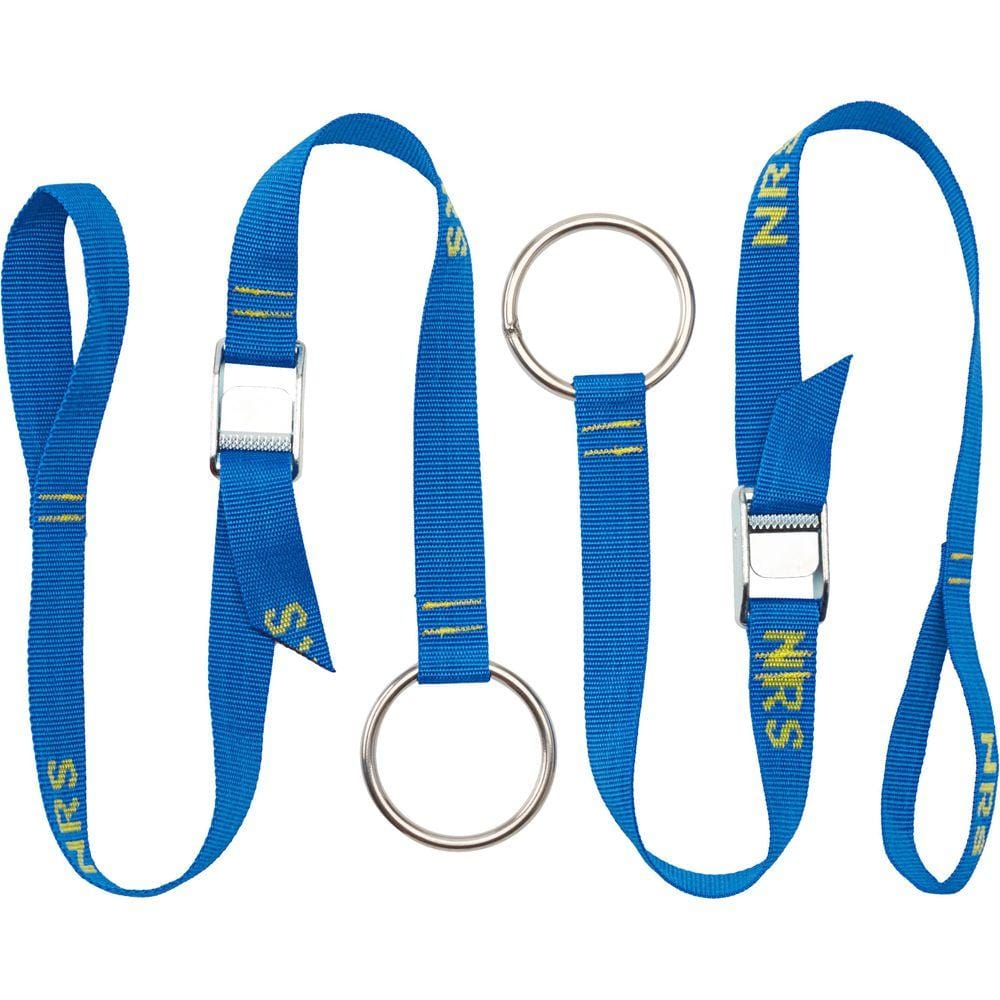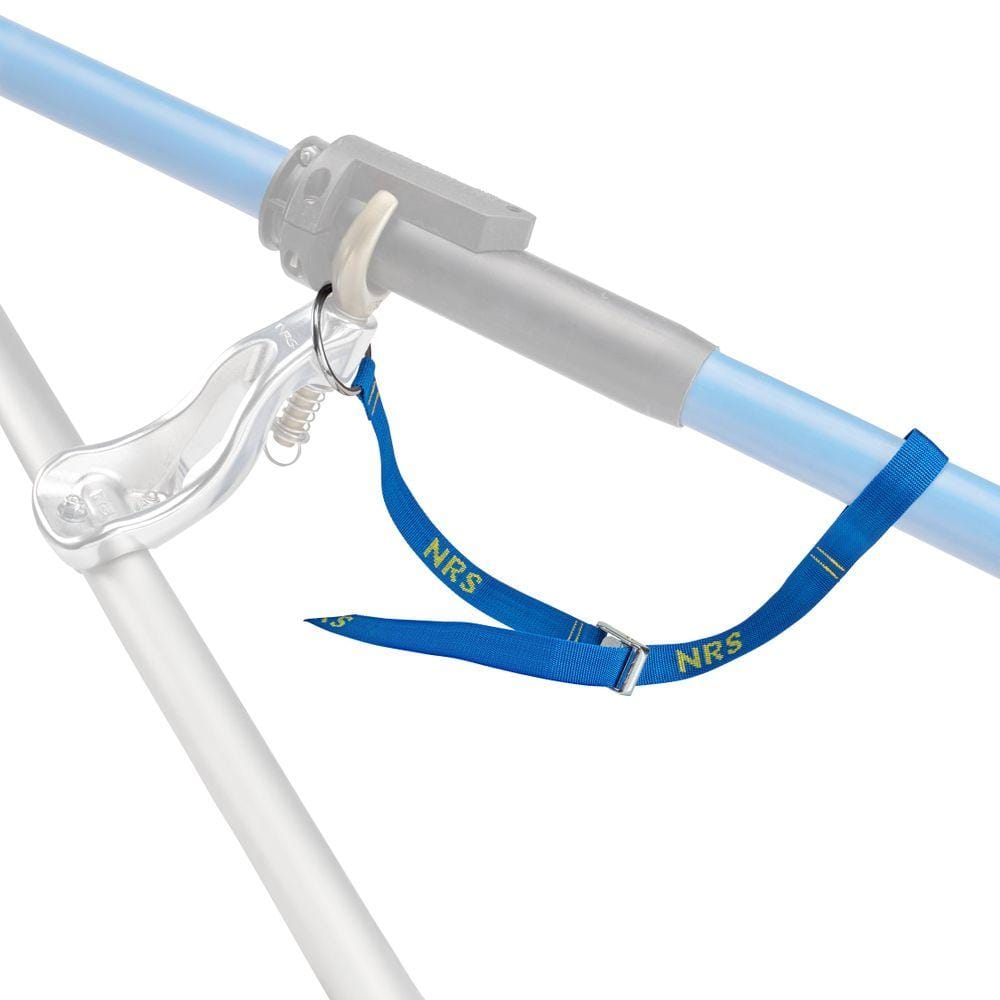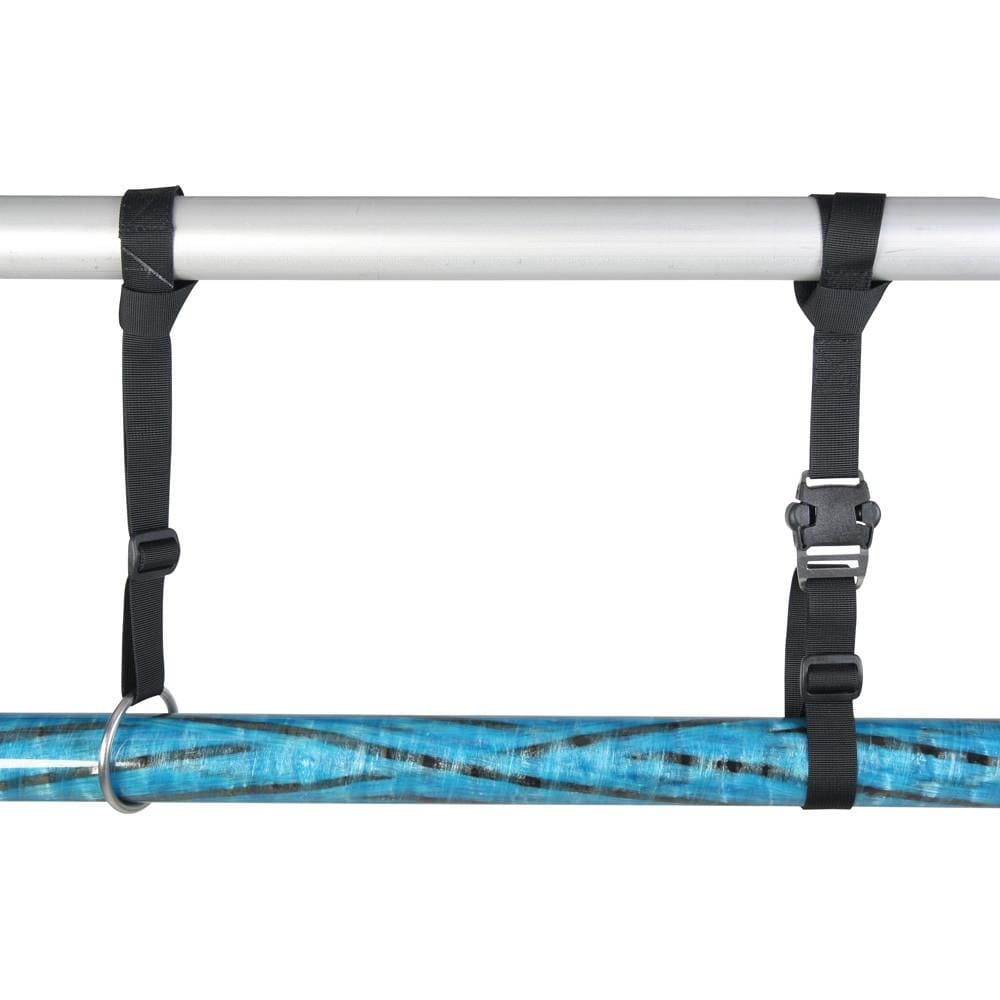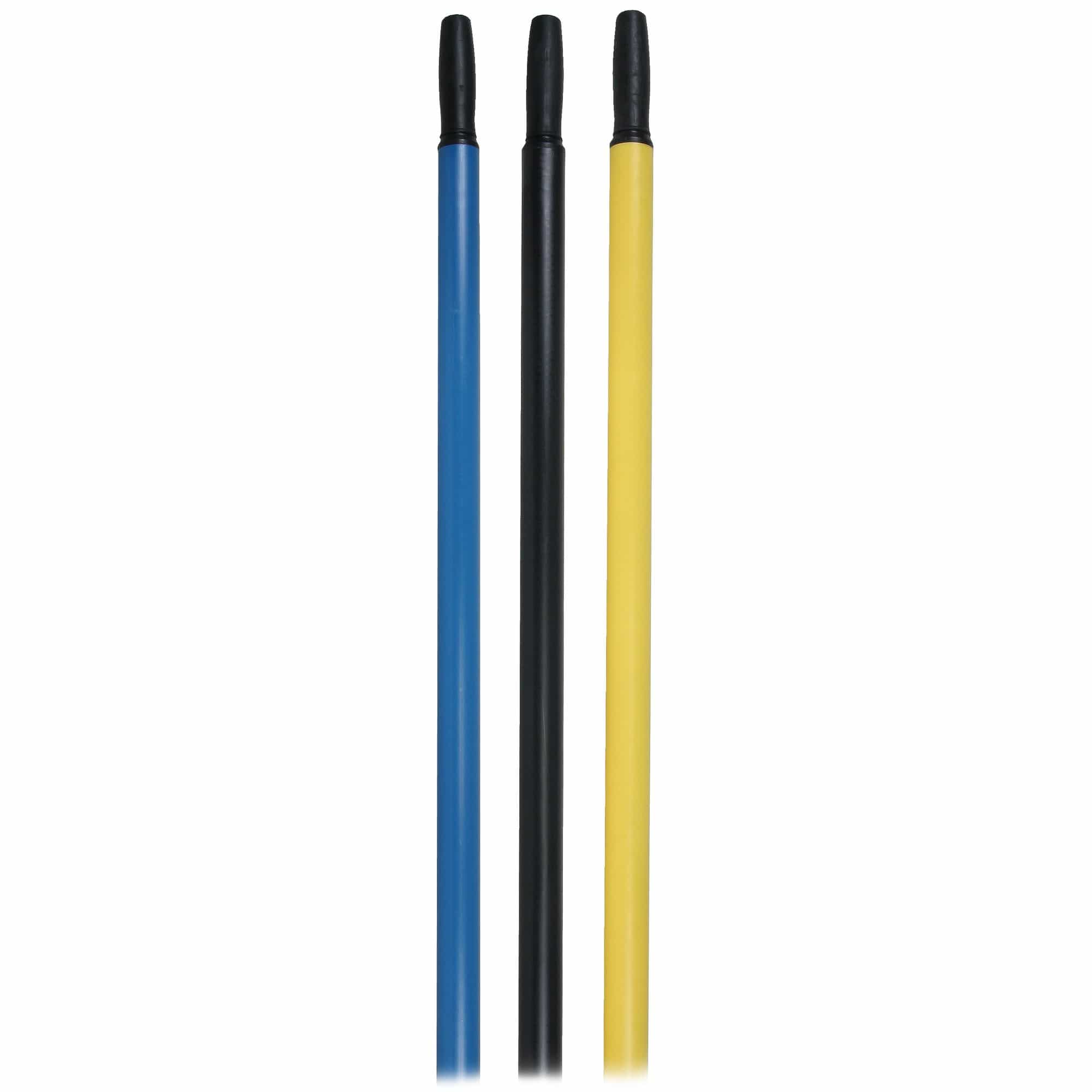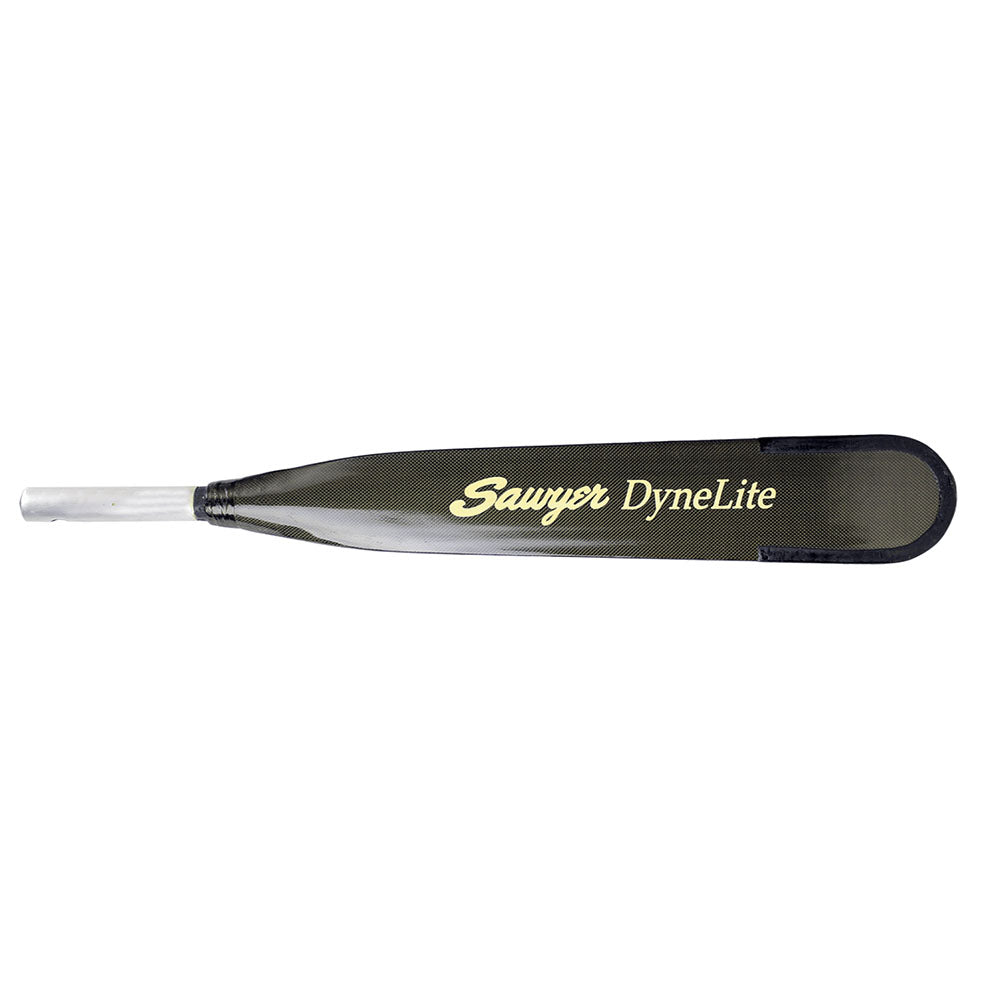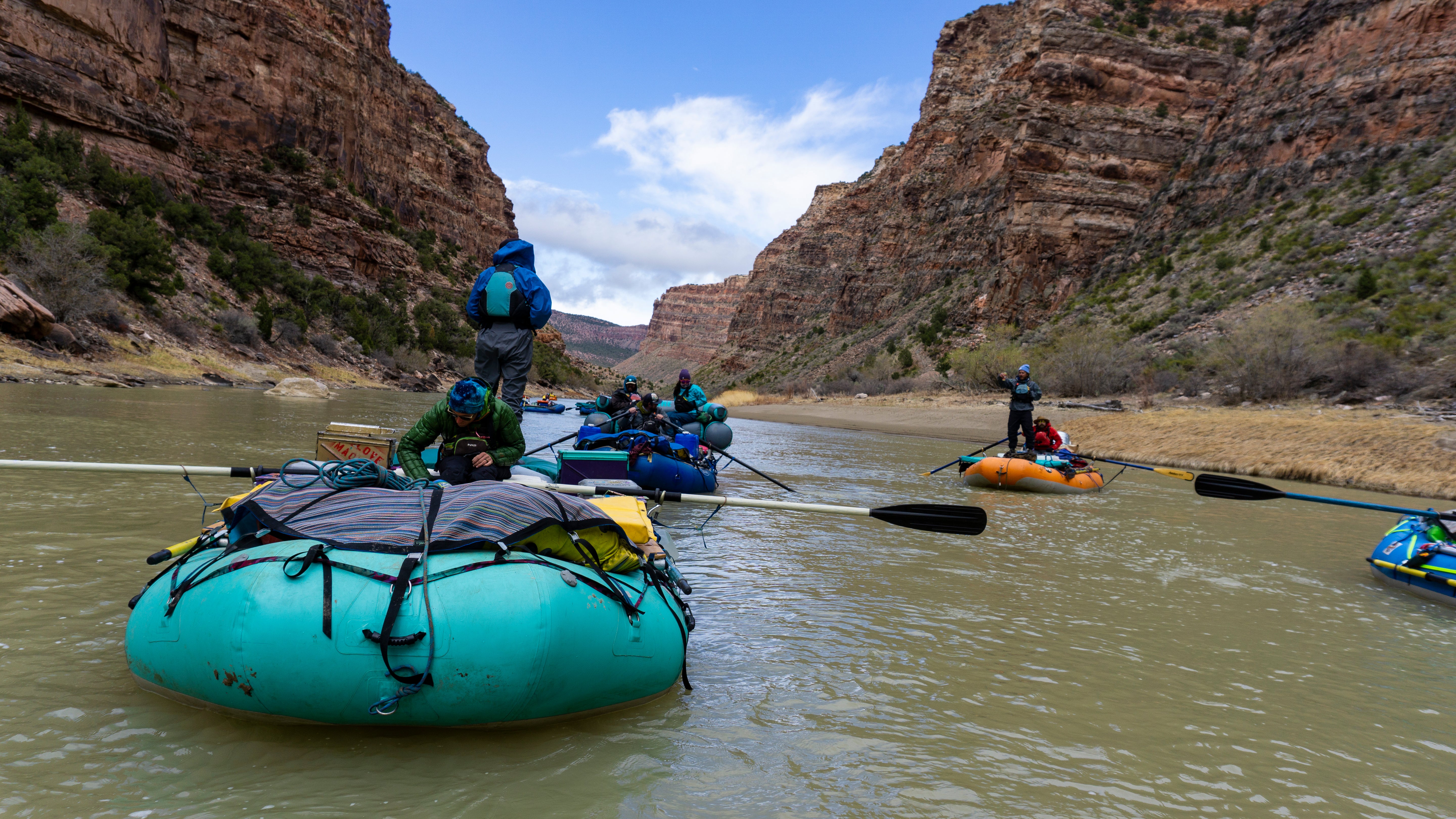Choosing the right oars can be daunting, but CKS Online is here to help you. Picking the right oar begins at the most basic level by knowing which length is appropriate for your raft. This is strongly influenced by the size of your boat, and also by the rivers you plan to row.
We also review oar blade types and optional oar upgrades. Let us guide you through the process of choosing the right oar setup for your raft below!

Oar Sizing & Length
Personal preference plays a huge role in determining the right oar size and length. There unfortunately is no precise formula or size chart for determining the right oar for your raft.
A good general rule of thumb is:
You want about 1/3 of the oar on the inside of the oar mount, and 2/3 of the oar on the outside of the oar mount.
Before continuing, please know that when we are discussing "oar sizing" we are always referring to the total length of the oar shaft plus the oar blade. To further clarify, because a typical oar blade is 30" long, the oar shafts are be 30" shorter than their advertised length. The advertised length on an oar shaft (aka "oar sizing") is the total length of the oar shaft plus the oar blade.
Since the oarlock is sitting (ideally) right at the edge of your boat, another way of thinking about this is: you want 1/3 of the total oar length inside your boat, and 2/3 of the total oar length outside of your boat.
As such, you should know the total width of your boat, then divide that number by two. Take that number and multiply it by 3. We recommend using inches for easy calculation and then converting the final number of inches into feet.
For example, a STAR Outlaw 130 is 6'2", or 74 inches, wide. Following the calculation above, the formula suggests we need an oar length that is 111 inches long. This size converts into a 9.25' oar.
The 3/2 Formula:
74" / 2 = 37"
37" x 3 = 111" (9' 3")
Or, to simplify things, just multiply the width of your raft frame by 1.5
If you're well versed in oar lengths, you probably already know that there is not a standard 9.25' oar length available. This is where personal considerations come into play, where you can round the length up or down depending on where you plan to row and how you plan to sit inside your boat.
| When to Round Up | When to Round Down |
|
|
You will want to round down in sizing if you plan to row technical or shallow rivers frequently. On these rivers, you don't want or need the full blade in the water when you're throwing a stroke.
You will want to round down if you plan to sit on and row from a cooler in your captain's bay.
You will want to round up in sizing if you plan to row bigger water. You want every stroke to have maximum power, and therefore want more of your oar blade below the surface of the water.
You will also want to round up if you are sitting up higher in your boat. For example, those who row from a DRE Captain's Chair will want a bit of extra length to compensate for the added seated height.
Will My Height Factor into the Right Oar Length?
Estimations with rowers' heights can get a bit goofy, because your height also changes the angle of your oar so it's a less-than-recommended calculation. However, we know some people do consider their height when choosing their oar length.
A lot of people like to row where the ends of the grips are just barely touching or one to two inches apart in the middle. Consider the points and calculations listed above to start with, and leave the height factor out until you get a solid opinion of what you really want.
Should I Get Counterbalanced Oars?
An oar shaft with counterbalanced grips means there is added weight in the oar handle. This weight in the handle offsets the weight in the rest of the oar shaft and oar blade, effectively creating less resistance when completing a forward stroke.
Counterbalanced oars are great in specific situations, but again--choosing a counterbalanced versus non-counterbalanced oar boils down to personal preference.
| When to Choose Counterbalanced Oars? | When to Choose Non-counterbalanced Oars |
|
|
The longer oar you have, the more likely you may want (or need) counterbalanced oars. In physics terms, a boat oar is a lever and longer oars means more weight is positioned further away from the fulcrum.
Counterbalanced oars are only slightly more expensive than non-counterbalanced oars, so we recommend getting them if your set up and rowing style falls into any of the considerations listed in the left column above.
One of the only few drawbacks of counterbalanced oars is that they are significantly heavier than non-counterbalanced oars. This makes them more annoying or difficult to transport, and counterbalanced oars are more likely to sink if the oar does get away from you.
Choosing the Right Oar Shaft
CKS Online carries three different oar shafts: the Sawyer MXS, the Sawyer Polecat, and the Carlisle Oar Shaft.
Sawyer MXS
The Sawyer MXS is a tough fiberglass whitewater oar shaft. The MXS has carbon reinforcement in it making it both lighter and stronger than other oar shafts on the market.
We recommend upgrading to a Sawyer MXS shaft if you plan on choosing longer oars. The longer your oar, the more leveraging required for you to move it, and the more the total weight of the oar will impact you over time.
Sawyer Polecat
The Sawyer Polecat offers a great value-to-performance ratio. It is a wood laminate oar, meaning it has a wood center. It is, however, heavier than the Sawyer MXS because it does not have the lightweight carbon reinforcement. The Polecat is, however, stronger than the comparable Carlisle Oar Shaft.
The Polecat is a great product with solid construction, and is perfect for rowing day trip float and fishing sections of the Upper Colorado or similar.
Carlisle Oar Shaft
The Carlisle Oar Shaft is the industry standard for an outfitter-grade basic oar. It is an aluminum shaft with a plastic coating. It gives you good performance at a low cost.
Carlisle oars do not come with a rope wrap, so you will need to purchase the NRS Molded Oar Sleeve in order to integrate these properly with your oar locks.
| Sawyer MXS | Sawyer Polecat | Carlisle Oar Shaft |
 |
 |
 |
|
|
|
Note: When you are ordering oars for the first time, we recommend purchasing three oars. Almost every river permit requires you have a spare oar on your boat. It is also a safety thing--you never want to be left with only one oar out there.
Choosing the Right Oar Blade
After you've chosen the correct oar length and model, you are now ready to move onto the next step: choosing the right oar blade.
Construction, with considerations to weight versus strength, is the first decision that needs to be made when deciding the right oar blade shape for you and your rig.
Plastic Blades
Plastic blades are great because they are the least expensive option. They are, however, heavier than other oar blade constructions.
The durability of plastic blades is nearly unmatched. If you are rowing shallower and more technical rivers where the opportunity to hit rocks is higher, we recommend choosing plastic blades.
CKS Online offers three plastic oar blade options:
| Carlisle Outfitter | Sawyer Duramax | Cataract Magnum |
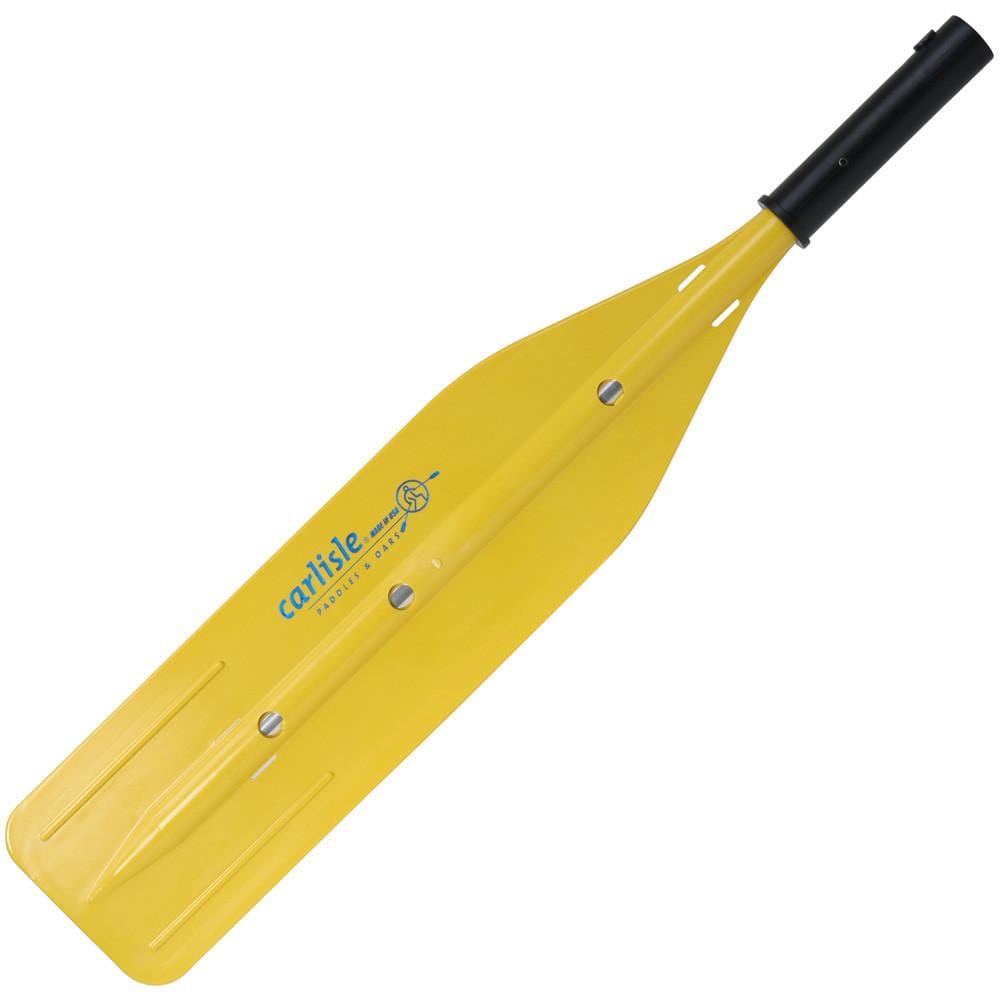 |
 |
 |
|
|
|
Plastic nylon blades are extremely durable, especially the Sawyer and Carlisle blades because there is no laminate or lightweight construction to break. As such, these blades are also noticeably heavier.
Wooden Blades
Oar blades that feature wood construction are lighter than plastic oar blades. They are less durable than plastic blades, but their lighter weight makes these blades perfect for longer multi-day trips.
CKS Online offers three wooden oar blade types:
| Sawyer Dynelite | Sawyer Smoker | Sawyer Laminated Fir |
 |
 |
 |
|
|
|
Oar Blade Shape
There are two general oar blade shapes: the rectangular Macon-style shape and a rounded fishing shape.
| Macon Shape | Fishing Shape |
 |
 |
Most all oar blades seen in the pictures above are a classic Macon-style shape. This shape is similar to a rectangle. It's a tried and true shape that offers the ideal amount of surface area for both power and speed.
Oar blades with a fishing shape have less sharp angles compared to the classic Macon-style. Rounding off corners prevents the oar blade from catching on rocks in shallow waters, while still offering a high surface area for rowing power when neede.
CKS Online sells three Fishing Shape oar blades: The Cataract Cutthroat, the Sawyer Shoal Cut Dynelite and the NRS Helix.
Fishing shapes are a great way to get maximum power per stroke in a shorter, rounder profile and should be considered for rowers who plan to paddle extremely shallow rivers or creeks.
Note: CKS Online does not sell "stubby" blades, but if you are considering this option for your oar you will need a longer shaft to compensate for the decreased blade length.
Oar Upgrades
CKS Online highly recommends upgrading your oar handles to Gilman Grips.
Gilman Grips are great for longer multi-day trips. You can immediately tell if the blade has the right orientation in the water as soon as you grab your oar. Gilman Grips also make for easier feathering once your blade is in the water. They easily allow you to change the angle of your oar in a controlled way.
 |
Gilman Grips |
Gilman Grips are also recommended for any rowers who experience wrist or elbow pain. The design is ergonomic and deliberately prevents fatigue.
Summary
In short, so much of choosing the right oar for you and your rig boils down to personal preference. If you follow the 3/2 sizing formula and have a set budget in mind, then sorting through all of the options will become a bit less daunting. Our Gear Experts are always happy to walk you through the selection process, contact us anytime!

![How to Choose the Right Oar [Length] for Your Raft](http://coloradokayak.com/cdn/shop/articles/Blog_Header_5.png?v=1650908263&width=1800)




